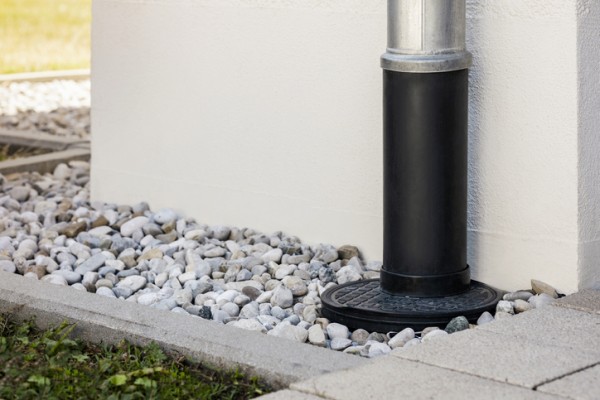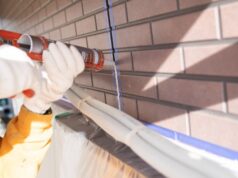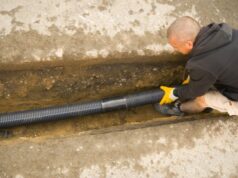
When it rains, all that water landing on your roof, driveways and garden has to go somewhere. A good stormwater system makes sure that water is directed away from your home, safely and legally, without causing damage to your property or your neighbours’.
Whether you’re building a new home or renovating, understanding how stormwater systems work—and what your obligations are—is essential to protecting your home’s structure, complying with local rules and avoiding backyard flooding.
What is stormwater?
Stormwater is the rainwater that falls on impervious surfaces like your roof, paths, driveways and patios. Unlike wastewater (which comes from your sinks, showers or toilets), stormwater is untreated and flows directly into council drains or local waterways.
Your home’s stormwater system is responsible for collecting and managing this runoff. If it’s poorly designed or not properly connected, you could face issues like:
- Pooling or flooding around your foundations
- Damage to retaining walls, fencing or landscaping
- Erosion and waterlogging
- Structural damage due to poor drainage or slab movement
- Legal issues if your runoff affects neighbouring properties
Key components of a stormwater system
A well-designed stormwater system typically includes:
- Gutters and downpipes – These collect rain from your roof and direct it toward ground-level outlets
- Pits and drains – Catch excess runoff from paved surfaces and funnel it into underground pipes
- Stormwater pipes – Carry water away from your property and into the council drainage system or street kerb
- Charged or gravity systems – Depending on your site layout, stormwater may flow naturally or require a sealed (charged) system to move water uphill
- Absorption or detention systems – On some sites, water must be detained temporarily or absorbed onsite if connection to mains is not viable
If you have a water tank, your stormwater system may also be designed to harvest water for reuse in your garden, toilets or laundry. Overflow from the tank must still connect to a legal point of discharge.
Site-specific design matters
Stormwater design is never one-size-fits-all. Your system will depend on:
- Roof area – Larger roof surfaces generate more runoff
- Block slope – Flat sites often need pumped or charged systems
- Soil type – Clay soil retains water and may need better surface drainage
- Easements or drains – These determine where your stormwater can legally go
- Proximity to neighbouring properties – Discharging water over a fence is not allowed
If you’re building on a sloping block, water from your property must not flow downhill into another lot. You’ll likely need a site-specific drainage plan that shows how stormwater will be safely managed across the whole property.
Stormwater storage and reuse
In many areas, councils or local water authorities encourage—or even require—the collection of stormwater for reuse. This might include:
- Rainwater tanks – Connected to roof catchments and used for gardens, toilets or washing machines
- Detention tanks – Temporarily store water during heavy rain and release it slowly to reduce load on public drains
- Retention systems – Store water permanently for use and manage overflow legally
Make sure your builder or plumber complies with AS/NZS 3500 and AS/NZS 2179 when installing tanks and stormwater infrastructure.
Common problems with stormwater systems
Many stormwater issues happen due to poor planning or lack of maintenance. Some of the most common include:
- Undersized pipes – Can’t cope with large storms, leading to overflow
- Blocked gutters or downpipes – Causes water to spill over and pool at the base of walls
- Disconnected or broken pipes – Stormwater ends up soaking into the ground or undermining footings
- Illegal discharge – Water directed to neighbouring land, public footpaths or sewerage systems can result in fines
If you notice damp patches, pooling water or cracking around your home’s exterior, your stormwater system could be part of the problem.
Council requirements and approvals
Every local council in Australia has specific requirements for stormwater management. Before you begin building or renovating, you’ll likely need to submit:
- A site plan showing all downpipes, drains and discharge points
- Details of detention or rainwater tanks, where required
- Engineering documentation if your system connects to kerb and channel drains, or crosses easements
Your builder or architect should factor this into your construction planning, but it’s your responsibility as the homeowner to make sure your property complies.
In high-risk areas, such as flood zones or locations with limited public drainage, councils may impose additional conditions like on-site detention tanks, flood overlays or regular inspections.
Maintenance tips
Even the best system won’t work properly if it’s not maintained. To keep your stormwater flowing freely:
- Clear leaves and debris from gutters every few months
- Flush downpipes and pits annually or after major storms
- Check overflows around your water tank to make sure they’re not blocked
- Watch for signs of erosion or shifting soil near outlets
If your home is older, consider getting a licensed plumber to inspect your system with a CCTV camera to check for blockages, tree roots or illegal connections.
Good stormwater design protects your home and your community
Stormwater might not be the most glamorous part of your renovation or new build, but it’s one of the most important. When designed and maintained properly, a stormwater system protects your home from water damage, reduces pressure on council infrastructure and helps manage Australia’s increasingly erratic weather patterns.
Make it part of your early planning, not an afterthought, and your home will stay high and dry—even when the storms roll in.





